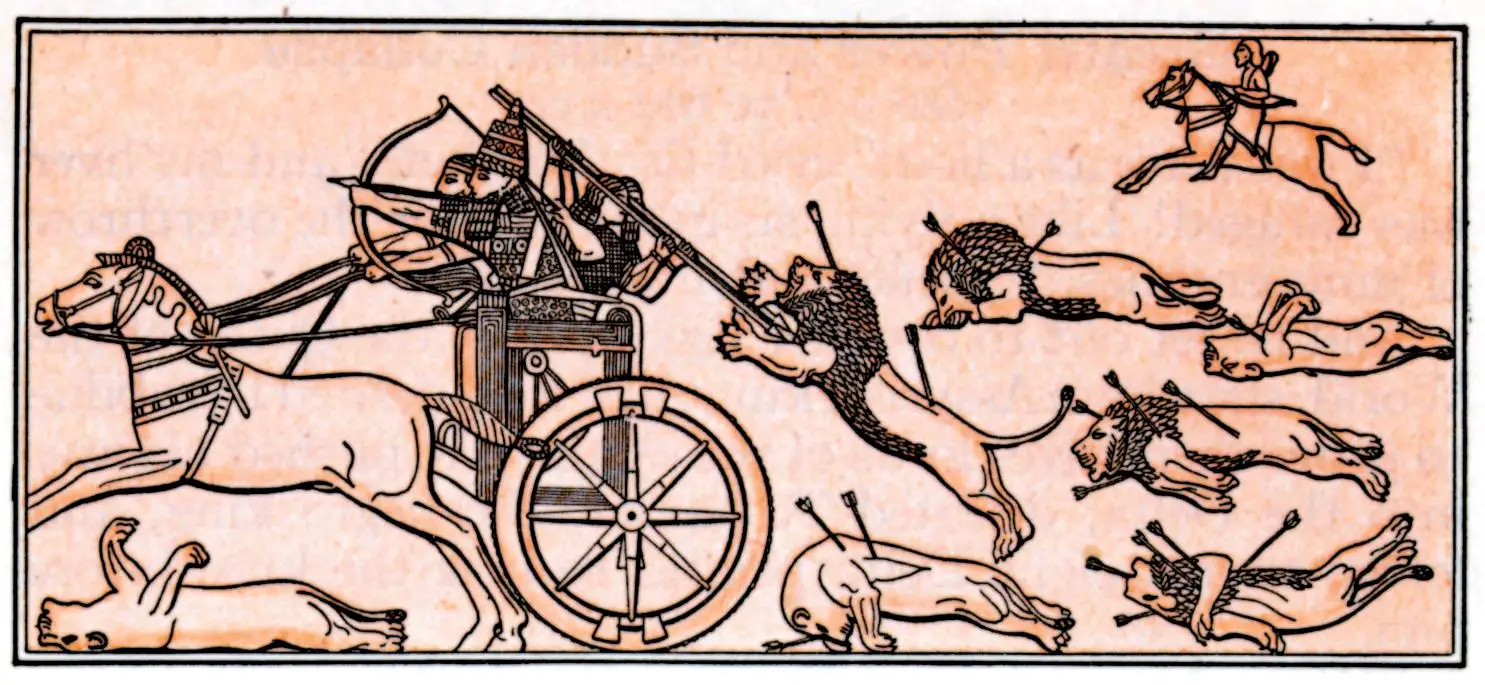Assyrian Army
Background
- The Assyrians were very able people with a range of achievements in science, technology and culture. However, it was not these civilised qualities that allowed them to create an empire. The expansion was down to one of the cruellest and most merciless armies humanity has ever seen.


A professional standing army
- In the past, soldiers worked on farms and might only offer military service when they were not engaged in harvest or other activities. So they could only work at certain times of the year. This all changed as a professional Assyrian army developed with specialised soldiers highly trained in combat tactics and siege warfare.

Weapons
- The Assyrian army was the first to use iron to help them protect and attack. At the time, bronze was the main material for weapons, but it did not offer the same hard protection and was easier to destroy. Iron was much harder so they used it for almost everything, including swords and blades. This new material played a key role in the Assyrian victories.
- The Assyrians weapons were also effective in practice. Assyrian archers had a new type of bow that allowed them to fire and hit the enemy at long distances, giving them a big advantage. They also used slings and could hurl stones in a deadly manner like bullets

Armour
- The Assyrians were also pioneers in terms of armour too. They were one of the first armies to develop scale armour. This armour is created out ofrectangular plates of iron and leather laced together into rows. When iron was used, this armour was quite effective to protect the body from attack.
- The Assyrians were well known for their cone-shaped iron helmets which offered them good head protection but also looked fearsome.
- They also used a range of different shields. Some were made out of wickerwork and held together with metal. The more effective ones were made of iron and had spikes on them.

Chariots
- The Assyrian army understood the power of chariots in a battle. Chariots were small vehicles usually supported by two large wheels. Assyrians were the first to use four powerful horses to pull their carriages and there were usually two men, a driver and an archer on board.
- The chariots themselves were carefully designed for war with large blades sticking out of each wheel, intended to cut enemy soldiers in half.

Cruelty
- One of the reasons why the Assyrian army was so successful was its cruel, ruthless nature. Those who tried to resist that army were subjected to a terrible fate. One of the methods used by the Assyrian army was extreme physical torture. They would cut off hands and feet and other body parts.
- Decapitated enemy heads were displayed on the city walls of the defeated army. Those who refused to surrender were killed or turned into slaves. The Assyrians showed no mercy and sometimes completely wiped out everything in their path.
- However, extreme brutality was not the only approach used by the Assyrians. Another method was to deport large numbers of people away from their homes. King Adad Nirari I, who reigned from 1307 BC, began this approach and it lasted until the end of the Assyrian Empire in 612 BC. Nirari I was a cunning leader and saw the enemy as a potential source of skilled labour in other parts of the empire. So, men, women and children were deported to different regions depending on their skills.

The siege
- The siege was the key method by which the Assyrians attacked. A siege is when an army surrounds and attacks cities and military defences with great effectiveness.
- They dug trenches as they approached to protect them from enemy attack. These trenches also allowed them to weaken walls by digging tunnels under them to get close enough to burn down wooden gates.
- The Assyrian army developed a very powerful method of getting beyond the walls of defence. Using clever engineering, they created a massive ramp. Then they would use a vehicle called a siege tower, which was an incredible tower on wheels with a massive battering ram. This machine was wheeled up the ramp and the battering ram was used to smash the enemy wall. Archers in the tower would fight off those who were defending the top of the wall. This allowed soldiers on the ground to put ladders in place, against the wall, to climb up and overcome the defending army.



